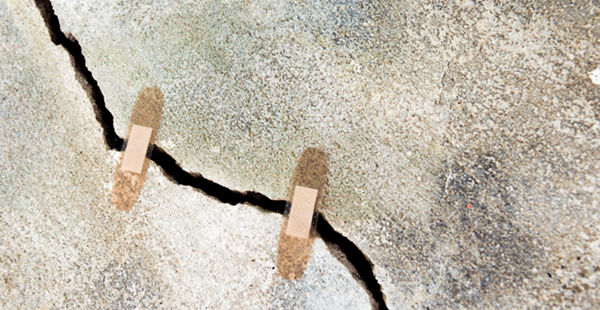There I was, driving giddily to the Social Security Administration office on Delmar Boulevard in St. Louis. It was June 30, and I was a newlywed doctor (surely it was a mistake?!) in a new city with a new job, ready to take on a new last name. The windows were down and the radio was blasting as I cruised through beautiful tree-lined streets, past businesspeople dining leisurely outside, and alongside cyclists enjoying an afternoon ride in the park.
But the moment I turned north, the lively green landscape faded abruptly into a new reality. Within one block, the trees and people were replaced with abandoned homes, broken windows, and desolate grey concrete. I turned down the radio and slowed to a stop at the intersection of Delmar and DeBaliviere.
No one had told me about the famous Delmar Divide, but now they didn’t have to. What I discovered in that moment was that Delmar Boulevard wasn’t just any street. It was a tangible line that ran east-west and represented an extreme racial and economic division in one of the most segregated cities in America.
Looking back now, I could not have asked for a better introduction to my new city, and to my intern year. My perspective of the daily struggles of our inner city population was forever shaped by the three hours I spent waiting my turn in that overheated, run-down, filled-to-capacity Social Security office on Delmar Boulevard.
Fast-forward three years and I have visions of gun violence and social injustice that I will never be able to clear from my head. Like the cop who burst frantically into the waiting room carrying a dead 5-year-old boy who had been shot in the chest. Or the body that had been ripped apart by an automatic rifle, sitting lifeless in the driver’s seat while the blaring music in his car played on. Or the silent tears of desperation running down the 13-year-old’s face after having had a bullet tear through his leg.
The problem is that it isn’t enough to dress a gunshot wound, sew up skin after a stabbing, give naloxone to the heroin overdose, or provide post-exposure HIV prophylaxis to a rape victim.
We must also consider where our patients have come from, and more important, where they are going. Consider that the reason your patient called the ambulance at 1 am for a non-urgent complaint is because that’s the only time she had off between jobs, and it was simply too dangerous to take public transportation. Consider that when you discharge that gunshot wound victim home, you are returning him/her to the same violent environment that encouraged retaliation and recidivism in the first place.
Emergency medicine isn’t just about treating an individual patient at one specific moment in time; it is about treating an entire community over time. For within the walls of the emergency department exists every disease and injury pattern, in every neighborhood, across all age ranges, within every income level, education level, culture, and lifestyle. And as such, we must go beyond our core role of providing acute care to individual patients in order to confront the social complexities that burden the entire population.
Fortunately, even the smallest interventions can make a difference, many of which are highlighted in this issue. For example, prescribe take-home naloxone (p.12), practice using alternatives to opioids, and provide resources for chemical dependency. On a larger scale, start a hospital-based violence intervention program, set up protocols for frequent ED utilizers, or work with police to develop a tactical emergency medical support (TEMS) team (p.28).
Visit the neighborhoods in which many of your patients live. Give your patients the benefit of the doubt. The overall health of our communities is as much our responsibility as it is theirs.



